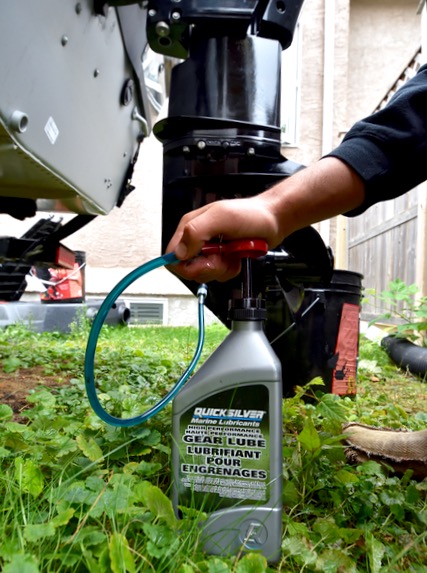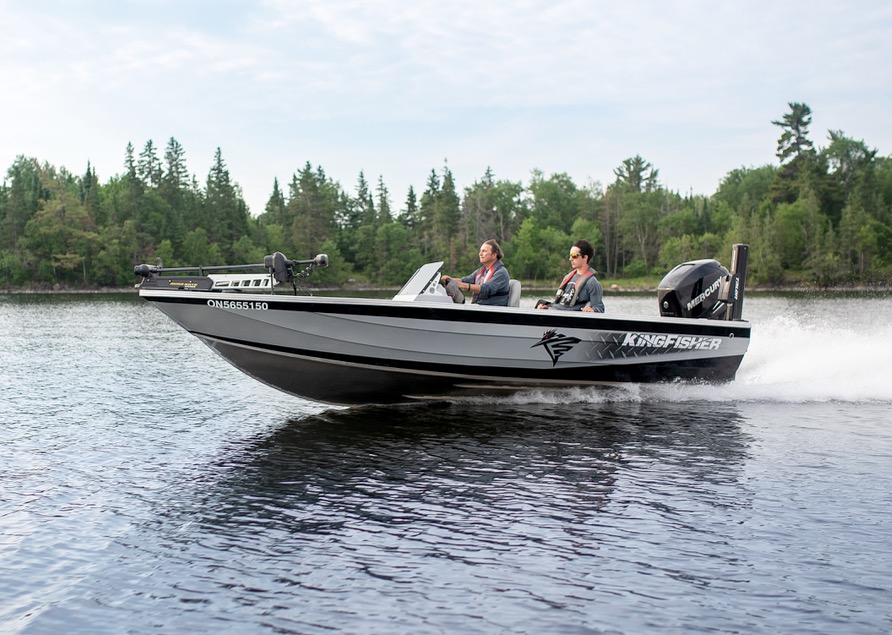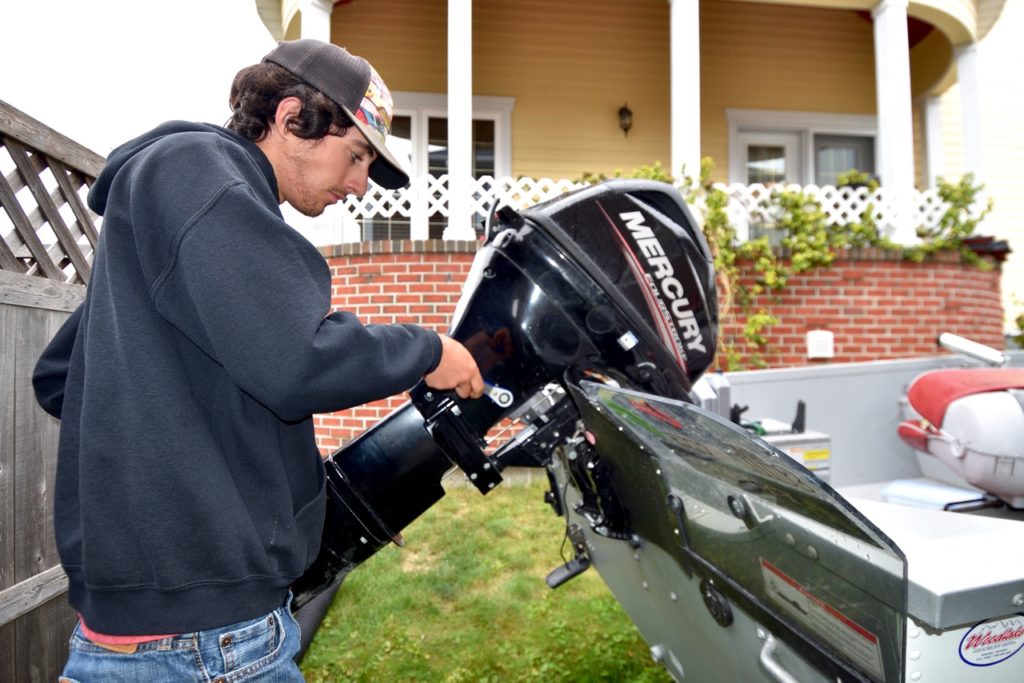BEDTIME FOR BOATS
It’s time to put away your fishing rig—and make sure it’s ready for action in the spring
Advertisement
MOTOR MAINTENANCE
While I service my smaller four-stroke outboard myself, I get the local marina to handle the 250-horsepower Verado on my big boat, if for no other reason than I don’t have specialized tools to access some of the components. The winterizing process is essentially the same for big and small motors, so if you’re mechanically inclined and have the right tools for the job, go for it.
Advertisement
If you don’t already have one, get a simple motor flusher (it looks like giant pair of earmuffs). This inexpensive but essential tool lets you service your engine in your driveway by hooking it up to a hose and attaching it to the water intakes on the lower unit. If you start the motor without water going through it, not only will you overheat it or score the pistons, you could also burn out the water pump.
Before I get to work on the motor, I first fill the gas tank with premium, ethanol-free fuel and add a good stabilizer to prevent fuel separation. That way, the additives will circulate throughout the engine as I prep it for winter storage.

To get started, I first remove the propeller and check the shaft for fishing line, plastic bags, weeds or anything else that might have gotten wrapped around it. Then I start the engine and warm it up so any sediment will suspend and drain out when I change the oil and filter. I always run a few drops of oil through my fingers to carefully check for signs of contamination. Slightly dirty oil is normal, but cloudy or milky oil is a sure sign of water—possibly from broken seals—so be vigilant. If you see that, it’s time to get your motor to a mechanic.
Advertisement
Next, change the lube in your lower unit and check it for water contamination, too. This job typically involves nothing more than removing the drain and vent plugs and catching the oil in a pan placed below the skeg. Just be careful not to lose the tiny rubber washers (because they cost only pennies a piece, I always replace mine anyway as a matter of course). Once the lower unit is drained, refill it with oil using a manual pump (see photo). Just screw the pump into the drain hole in the bottom and pump until you see the fluid emerge from the vent hole at the top. Then put the vent screw back in the top, which creates a vacuum, and insert the drain screw back in the bottom.
Replacing the spark plugs, fuel filter and water filter are the next items to cross off your motor maintenance to-do list. These take just seconds to change, and come next season when you find yourself far down the lake at night, with thunder rumbling in the distance, you’ll be glad you did.
Advertisement

Another hugely important item that very few anglers change until their goose is fully cooked is the water pump impeller. This is essentially a small, thick rubber fan that rotates and sucks in water to cool the engine. The water you see streaming out of the side of an outboard tells you the water pump and impeller are working. If you don’t see that when you start the motor, have a mechanic replace the impeller.
If your motor is a two-stroke, now’s the time to fog it. Simply remove the cowling and spray fogging lubricant into the air intake while the engine is running with the gas line removed. This keeps the internal engine parts lubricated to prevent corrosion and cylinder scuffing. You know you’ve completed the job once the engine smokes, sputters and stalls. Alternatively, you can remove each spark plug and spray the lubricant into the cylinders before replacing the plugs. Finally, drain the gas out of the carburetor. This typically involves nothing more than removing the fuel line and carburetor set screw.
What about fogging a four-stroke engine? Don’t bother. “Fogging four-stroke engines is a myth,” says my good friend Alvin Sinclair, a senior service mechanic. “You mix oil in the gasoline to lubricate a two-stroke outboard, that’s why you fog it. But four stroke motors have oil reservoirs just like your car or truck. It’s simply a waste of time, effort and money.”


